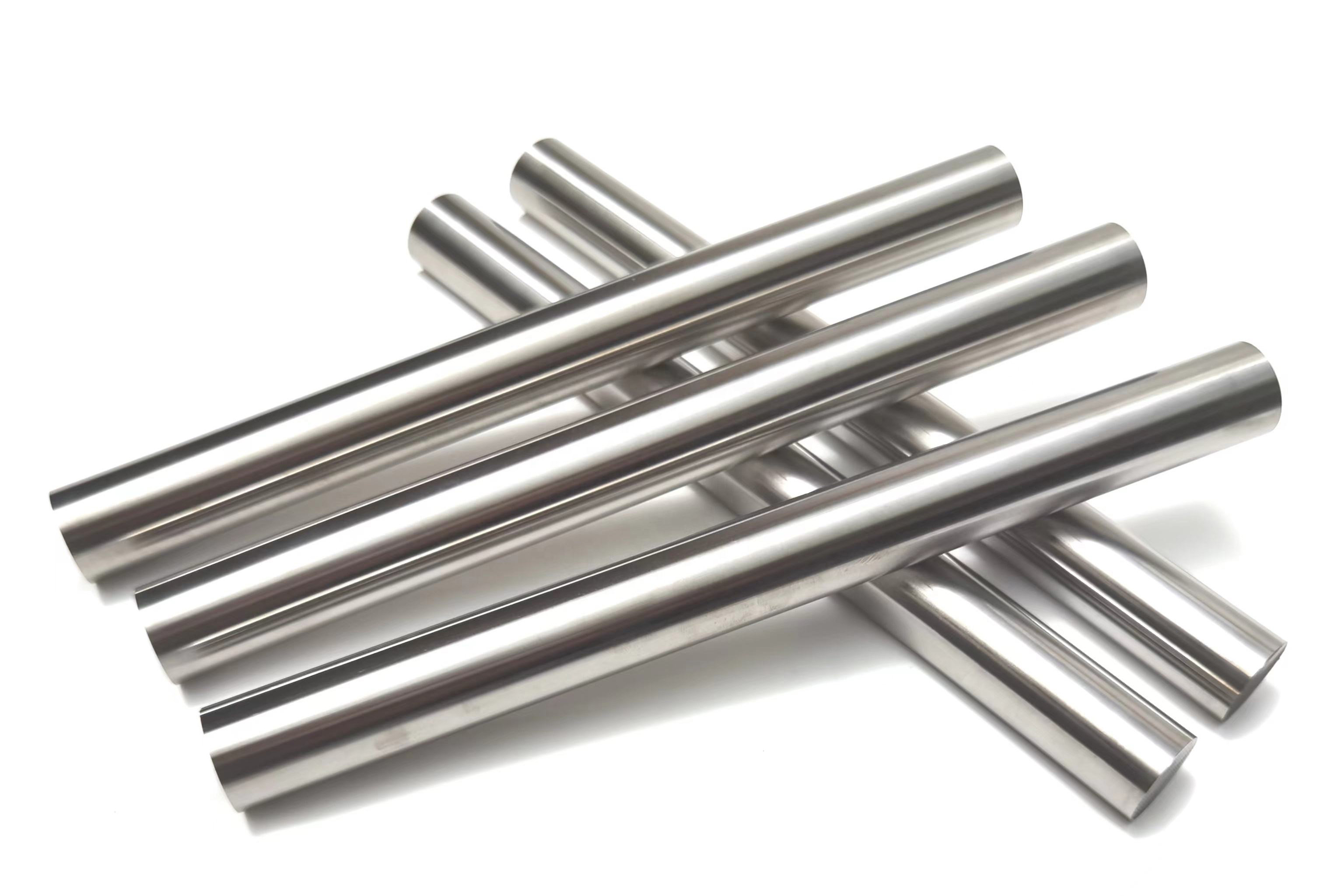Different Types of Molybdenum Tubes: How to Choose

Introduction to Molybdenum Tubes
Molybdenum is a most critical refractory metal of modern industry, prized for its melting point (2,623°C), high-temperature strength, low vapor pressure, high corrosion resistance, and high thermal conductivity. All these properties make it extremely useful in industries like aerospace, electronics, metallurgy, nuclear energy, and semiconductor production. Of all the product forms of molybdenum, tubing is especially versatile and has wide-ranging applications—anging from thermocouple protective sheaths to structural parts of heat-resistant furnaces at high temperatures.
All molybdenum tubes are not the same, though. Depending on their alloying content, manufacturing process, purity level, and shape, different molybdenum tubes possess specific strengths. These differences are important in the selection of the right material for your application.

Seamless vs. Welded Molybdenum Tubes
The easiest distinction among molybdenum tubes is in their production method—whether they are seamless or welded.
--Seamless Molybdenum Tubes
Seamless tubes are produced by extrusion, rotary swaging, or deep drawing. The processes produce tubes without a longitudinal seam and thus an isotropic microstructure with excellent mechanical integrity.
Seamless tubes are ideally suited to situations that demand high internal pressure, thermal cycling, or structural loading. Their isotropic grain structure and wall thickness assure reliability in high-performance applications such as aerospace engines, high-vacuum furnaces, and precision instruments.
Further reading: How Is Molybdenum Metal Used in Vacuum Furnace Hot Zone?
--Welded Molybdenum Tubes
Conversely, welded molybdenum tubes are produced by rolling a molybdenum sheet into cylindrical form and then welding the joint, typically TIG (tungsten inert gas) welding.
Stronger at the weld joint, but less so, welded tubes are cheaper and are adequately suited for non-critical applications in products like gas distribution tubing, heater shields, and chemical vapor deposition chambers. They are more flexible in available sizes and wall thicknesses and are often utilized for specialty parts.
Where to make the choice between welded and seamless will depend on the mechanical need of the application, cost allowed, and structural uniformity value.
Material Variants: Pure Molybdenum, TZM, and Mo-La Tubes
Not only does the fabrication method vary, but molybdenum tubes also vary by composition. Three general categories of materials are used most commonly:
1. High-Purity Molybdenum Tubes
These tubes are ≥99.95% pure molybdenum and are applicable to the majority of uses. Because they have a high melting point, a good dimensional stability, and inertness, they can be suited for sputtering targets, furnace insulation, X-ray uses, and other uses requiring ultra-clean materials. Pure molybdenum tubes can be machined and fabricated with ease into complex geometries.
2. TZM Alloy Tubes
TZM (Titanium-Zirconium-Molybdenum) is a molybdenum alloy containing around 0.5% Ti and 0.08% Zr, with a slight carbon content. The addition increases the strength, creep strength, and recrystallization temperature. TZM tubes are commonly used in aerospace structures, die-casting dies, and parts of high-pressure furnaces where high-temperature strength is required.
The trade-off is cost—TZM is more expensive than pure molybdenum, and it is somewhat harder to work with. However, where there is prolonged thermal exposure or extreme mechanical stress, TZM's value well justifies the cost.
3. Mo-La (Molybdenum-Lanthanum) Tubes
Mo-La is an oxidation-strengthened alloy, with 0.3–1.2% lanthanum oxide (La₂O₃) added to the molybdenum matrix. This forms a stable microstructure with high resistance to grain growth at high temperatures, and it increases ductility as well as thermal fatigue life. Mo-La tubes are used in vacuum furnace hot zones, x-ray sources, and cathode components exposed to extreme temperature changes.
TZM vs. Mo-La: The decision between them typically rests upon whether the primary need is structural strength (TZM) or thermal performance and ductility (Mo-La).
Further reading: TZM Alloy vs Pure Molybdenum
Tube Geometry: Capillary, Thin-Wall, and Heavy-Wall
Molybdenum tube geometry—specifically wall thickness and internal diameter—is also of key concern in terms of performance.
Capillary moly tubes, typically with inside diameters below 1 mm, are used in thermocouple protection, microfluidics, and precision instrumentation. Their tightness and high dimensional tolerance enable them to be used in controlled fluid or gas delivery in laboratory or aerospace systems.
Thin-wall tubes are designed to offer lowest weight with retention of structural function and effective thermal transfer. Thin-wall tubes are likely to be used in thermal shielding, vacuum chamber insulation, and radiant heater elements.
Heavy-wall tubes, on the other hand, offer greater mechanical strength and are used in applications requiring pressure retention, shock resistance, or longer wear—chemical reactors, sputtering targets, and hot isostatic pressing (HIP) systems. For more molybdenum products and customization, please check Advanced Refractory Metals (ARM).
How to Choose the Best Type of Mo Tubes
Select the best molybdenum tube according to the following valuable selection criteria:
- Application environment: For inert or vacuum environments, high-purity molybdenum is sufficient. Apply coated tubes or protecting atmospheres for oxidizing or corrosive environments.
- Thermal load: For applications with long-term high temperatures (>1,200°C), apply TZM or Mo-La.
- Mechanical stress: Seamless and alloyed tubes (especially TZM) are optimal for pressure retention or dynamic loading.
- Cost sensitivity: Low-stress, high-volume use employs welded or pure molybdenum tubes at excellent value.
- Dimentional requirements: For small components or accurate flow control, capillary tubes provide high accuracy and response.
Summary Table of Different Molybdenum Tubes
|
Type |
Key Features |
Typical Applications |
|
Manufacturing Method |
||
|
Seamless Tube |
No weld seam, high mechanical strength, uniform structure |
Aerospace, high-pressure systems, vacuum furnaces |
|
Welded Tube |
Economical, easy customization, lower strength at seam |
Heater elements, gas lines, less critical components |
|
Material |
||
|
Pure Mo (≥99.95%) |
High melting point, chemical purity, good machinability |
Furnaces, electronics, crystal growth, vacuum applications |
|
TZM Alloy |
High strength, creep resistance, good at high temperatures |
Aerospace parts, dies, high-load furnace parts |
|
Mo-La Alloy |
High recrystallization temperature, excellent ductility, thermal fatigue resistance |
Hot zones, x-ray sources, cathodes, high-temp vacuum applications |
|
Geometry |
||
|
Capillary Tube |
Very small inner diameter, precise flow control |
Thermocouple sheaths, microfluidics, precision instrumentation |
|
Thin-Wall Tube |
Lightweight, good thermal transfer |
Radiant heaters, vacuum insulation, aerospace thermal shields |
|
Heavy-Wall Tube |
High strength, impact and pressure resistance |
HIP systems, chemical reactors, structural thermal components |
Conclusion
Molybdenum tubes may look simple on initial inspection, but they exist in a range of geometries and applications. Through identification of the difference between seamless and welded forms, learning about advantages in alloyed grades like TZM and Mo-La, and selecting the most suitable geometry for your working application, you can ensure optimal performance and longevity in your application. Molybdenum's range of applicability continues to make it an underlying material in the globe's most advanced technologies.
{{item.content}}
LEVE A REPLY
{{item.children[0].content}}
{{item.content}}






